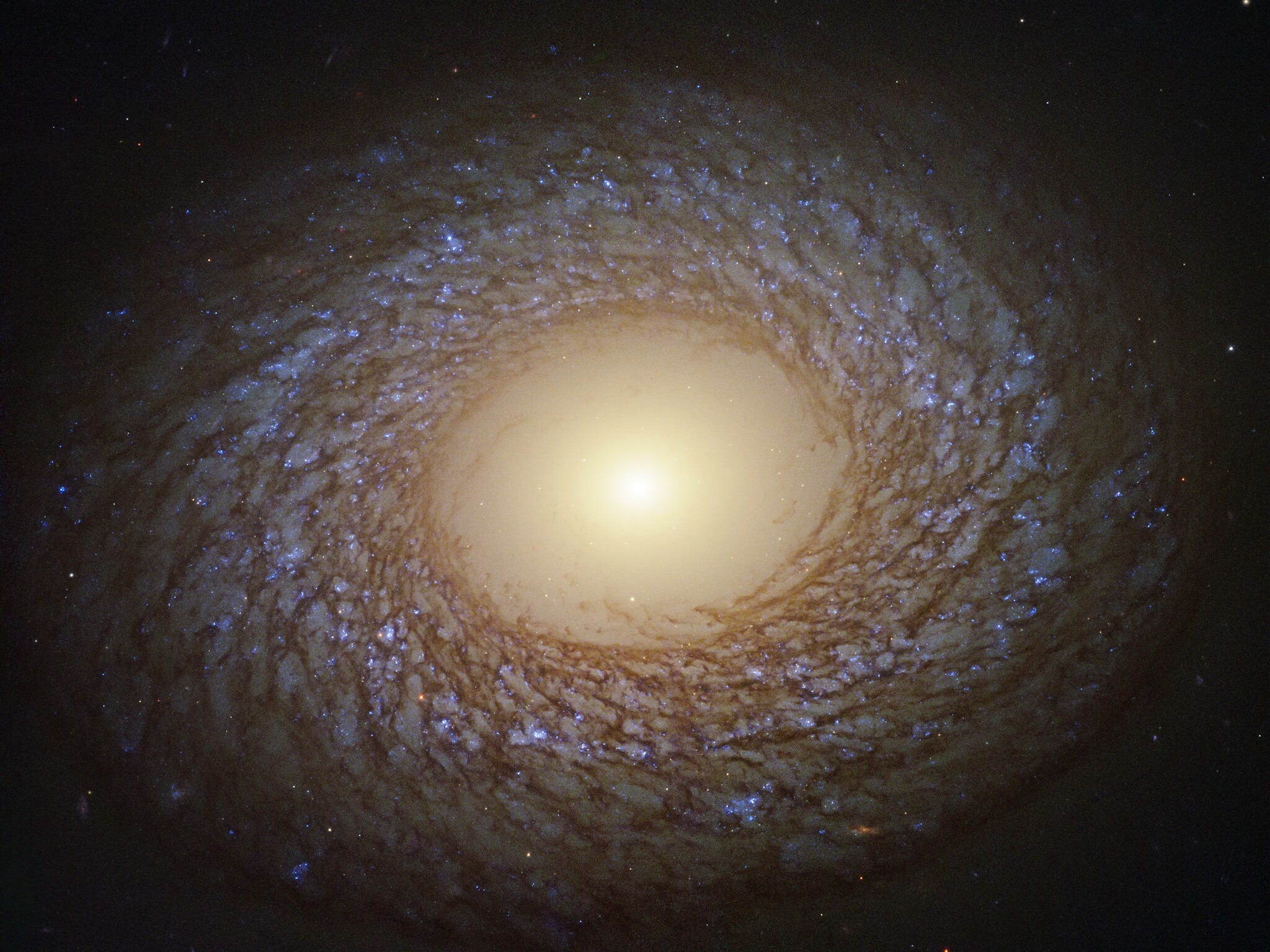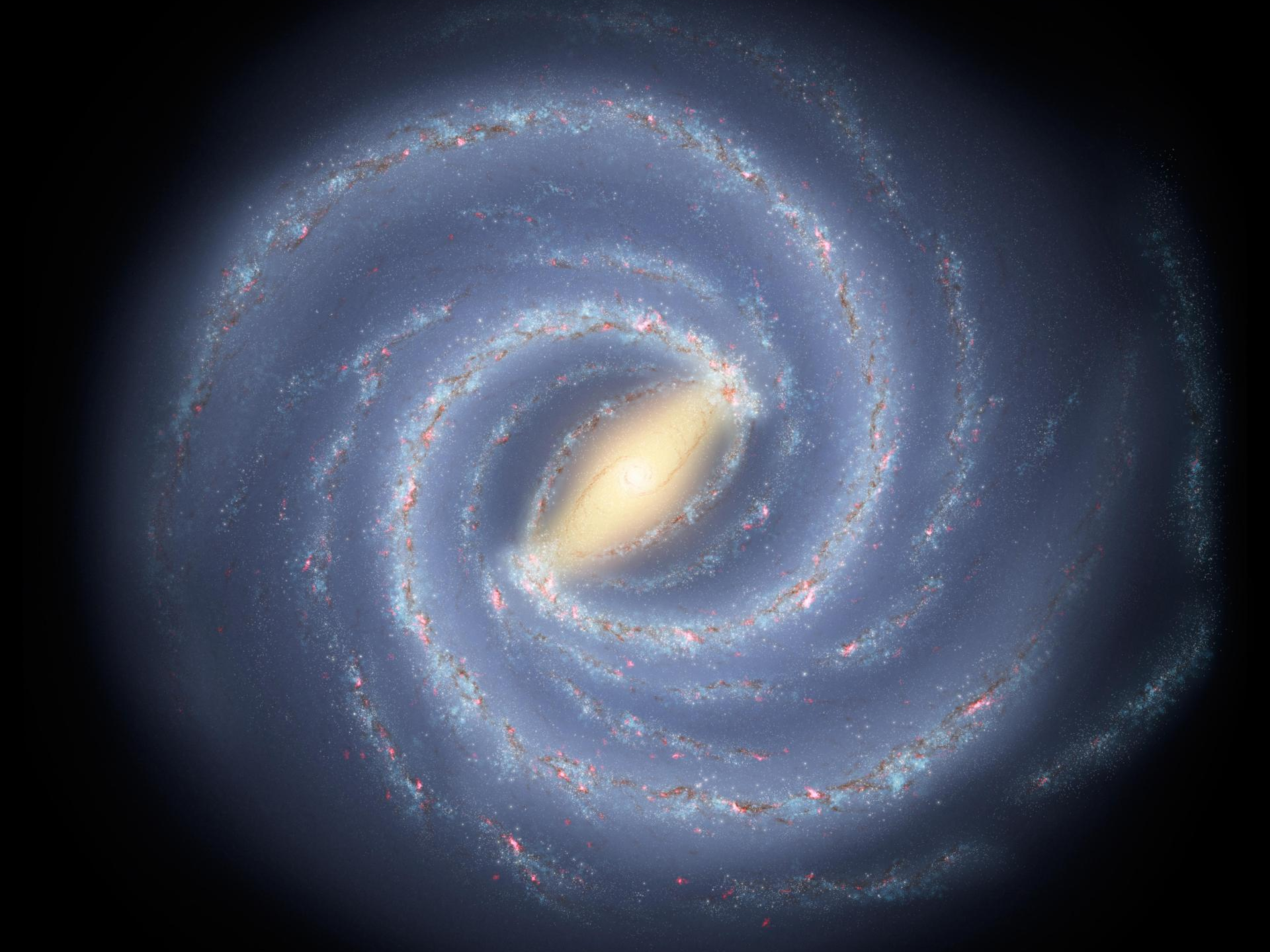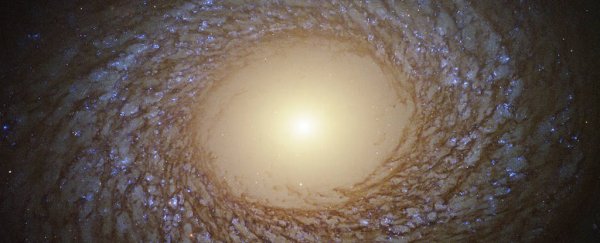NASA's most powerful space telescope, Hubble, captured a uniquely picturesque galaxy in a photo the agency released on Thursday.
The galaxy, called NGC 2775, is located 67 million light-years away and doesn't seem to be forming stars that much anymore. Astronomers can tell that's the case because of the relatively empty, clear bulge at the galaxy's centre.
When it was younger, the galaxy's middle region was likely bursting with activity as gas condensed into newborn stars. Now, however, all the gas seems to be used up.
The arms spinning around the galaxy's centre are "flocculent" – fluffy and feathery-looking – due to dark lines of dust and puffs of gas clouds. Millions of young stars shine bright blue through the haze.
By contrast, other spiral galaxies – including the Milky Way – have more distinct arms where stars and gas are compressed.
 NGC 2275, 2 July 2020. (ESA/NASA/Hubble/J. Lee/PHANGS-HST Team/Judy Schmidt/Geckzilla)
NGC 2275, 2 July 2020. (ESA/NASA/Hubble/J. Lee/PHANGS-HST Team/Judy Schmidt/Geckzilla)
Hubble is NASA's strongest telescope – but not for long
NASA launched Hubble into Earth's orbit in April 1990. Since then, the telescope has discovered new planets, revealed strange galaxies, and provided new insights into the nature of black holes. It also found that the universe is expanding more quickly than scientists imagined.
Upcoming space telescopes could return photos even more striking than Hubble's.
NASA's next such project, the James Webb Space Telescope (JWST), will use more advanced infrared cameras than any past telescope to image our galaxy.
"Even one image from Webb will be the highest-quality image ever obtained of the galactic centre," Roeland van der Marel, an astronomer who worked on JWST's imaging tools, said in a 2019 press release.
 Concept of the Milky Way showing its central bar. (NASA/JPL-Caltech)
Concept of the Milky Way showing its central bar. (NASA/JPL-Caltech)
Such images could help answer some of scientists' biggest questions about how our galaxy formed and how it evolves over time.
The upcoming telescope is fully assembled and now faces a long testing process in Northrop Grumman's California facilities before its launch date on March 30, 2021.
Additionally, the Nancy Grace Roman Space Telescope – named for the woman who made Hubble's launch possible – will have 100 times the view of Hubble. After it launches in the mid-2020s, it's expected to photograph thousands of new exoplanets and probe the nature of dark energy, a mysterious force that makes up 68 percent of the universe and drives its expansion.
Over the Roman Space Telescope's five-year lifetime, it will measure light from a billion galaxies and survey the inner Milky Way with the hope of finding about 2,600 new planets and photographing them. It will also help scientists test Albert Einstein's general theory of relativity.
This article was originally published by Business Insider.
More from Business Insider:
